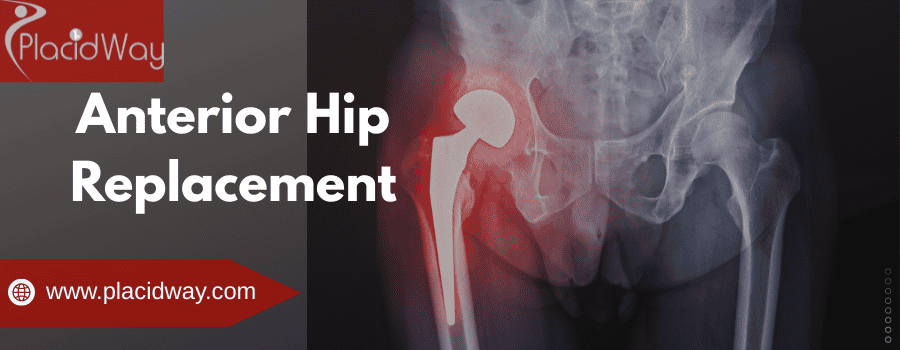Anterior Hip Replacement: A Patient's Guide to Candidacy

Living with chronic hip pain can be debilitating, making even simple movements a daily challenge. If you've explored non-surgical treatments without success, a hip replacement might be your next step. The anterior hip replacement, also known as the direct anterior approach, is a muscle-sparing surgical technique that is gaining popularity for its potential for a faster recovery. This procedure allows the surgeon to access the hip joint from the front of the body, working between the muscles rather than cutting through them.
But is this advanced procedure right for everyone? Determining if you are a good candidate for anterior hip replacement involves a careful evaluation of your health, anatomy, and lifestyle. This guide will answer the most common questions people have, providing the clear, expert information you need to have a confident conversation with your surgeon about your options for a new, pain-free hip.
What is an anterior hip replacement?
"An anterior hip replacement is a minimally invasive surgical approach where the surgeon makes an incision on the front of the hip, allowing them to replace the joint by working between the major muscles instead of cutting or detaching them."
This technique is often called a "muscle-sparing" approach. By preserving the major muscles around the hip, such as the gluteus muscles, this method can lead to less pain and a more stable hip immediately after surgery. The surgeon accesses the hip joint through a natural interval between muscles.
Because the muscles that are critical for hip function and stability are left undisturbed, patients may experience a quicker initial recovery. This often translates to a shorter hospital stay and an earlier return to daily activities compared to the more traditional posterior (from the back) or lateral (from the side) approaches.
Who is a good candidate for anterior hip replacement?
"The ideal candidate for an anterior hip replacement is typically a non-obese, younger, and generally active individual with significant hip arthritis who has not had previous hip surgery."
While many people can benefit from this approach, surgeons look for specific criteria to ensure the best outcomes. The ideal patient profile helps minimize surgical challenges and maximizes the benefits of the muscle-sparing technique.
Your surgeon will conduct a thorough evaluation, including reviewing your medical history, performing a physical exam, and analyzing X-rays. Key factors that make someone a strong candidate for anterior hip replacement include having a Body Mass Index (BMI) under 35, good bone quality, and a commitment to post-operative rehabilitation.
What is the cost of an anterior hip replacement?
"The total cost of an anterior hip replacement typically ranges from $20,000 to over $50,000, with the final out-of-pocket expense depending heavily on your insurance coverage and geographic location."
The cost of an anterior hip replacement is complex and varies widely. The final bill is a combination of several components, including the surgeon's fee, the hospital or surgery center's fees, anesthesia, and the cost of the implant itself. While the anterior surgical approach itself isn't always priced differently than a posterior one, it can lead to overall cost savings. Because it's less invasive, patients often have a shorter hospital stay—sometimes even going home the same day—which can significantly reduce facility charges.
Your insurance plan is the biggest factor in determining your personal costs. You will be responsible for your deductible, copayments, and any coinsurance until you reach your out-of-pocket maximum. It is essential to get a detailed estimate from your surgeon's office and speak directly with your insurance provider to understand what is covered.
Here is a typical, estimated breakdown of potential costs for an uninsured patient.
What are the main advantages of the anterior approach?
"The primary advantages of an anterior hip replacement include the potential for a faster early recovery, less postoperative pain, a lower risk of hip dislocation, and fewer restrictions on movement immediately after surgery."
Because the procedure avoids cutting major muscles, patients often experience several key benefits:
- Faster Recovery: Many patients are able to walk and bear weight on the new hip sooner, often within a day of the surgery.
- Less Pain: Less muscle trauma typically means less pain medication is needed during recovery.
- Lower Dislocation Risk: Preserving the muscles and soft tissues at the back of the hip makes the new joint inherently more stable and less prone to dislocating.
- Fewer Precautions: Patients often have no, or very few, restrictions on movement after surgery. They can typically bend at the hip, cross their legs, and sleep in any position without fear of dislocation.
Are there age limits for an anterior hip replacement?
"There are no strict age limits; however, the procedure is often favored for younger, more active patients who can take full advantage of the quicker recovery period."
The decision is based more on your physiological health than your chronological age. An active, healthy 75-year-old could be an excellent candidate, while a less healthy, sedentary 50-year-old might not be.
The focus is on your overall health, bone density, and ability to participate in the necessary physical therapy after the operation. If you are healthy enough for a major surgery and motivated to recover, age itself is not typically a barrier.
Does my weight affect my candidacy?
"Yes, your weight is a significant factor. Most surgeons consider a Body Mass Index (BMI) below 35-40 to be a requirement, as excess abdominal tissue can make accessing the joint from the front more difficult and increase wound healing complications."
Being a candidate for anterior hip replacement is highly dependent on your body type. A large amount of soft tissue at the front of the hip can create technical challenges for the surgeon, potentially making the surgery longer and increasing the risk of infection or poor wound healing.
If your BMI is high, your surgeon will likely recommend a weight loss plan before considering you for the anterior approach. This not only improves your candidacy but also leads to better overall surgical outcomes, regardless of the approach used.
What kind of hip problems are best for this approach?
"The anterior approach is most commonly used for patients with osteoarthritis, the 'wear-and-tear' form of arthritis, but it can also be effective for rheumatoid arthritis, avascular necrosis, or certain hip fractures."
The most common reason for any hip replacement is severe osteoarthritis that has destroyed the cartilage and is causing bone-on-bone friction. The anterior approach is an excellent option for this.
However, it may not be suitable for complex cases, such as revision surgeries (where an old implant is being replaced) or for patients with significant hip deformities or certain types of previously implanted hardware. In these more complex situations, a posterior approach often provides the surgeon with better visibility and access to the joint.
Are there reasons someone should NOT have an anterior hip replacement?
"Yes, contraindications include significant obesity, very muscular thighs, certain anatomical deformities of the hip or femur, and a history of previous complex hip surgeries."
While the anterior approach has many benefits, it is not the best choice for every patient. You may be a better candidate for a different approach if you have:
- A BMI over 40: This significantly increases the risk of wound complications.
- Very muscular build: A large amount of muscle mass in the thigh can make the surgical exposure more difficult.
- Hardware from a previous fracture: Plates or screws can obstruct the path for the anterior approach.
- Significant bone deformity: Conditions like severe hip dysplasia may require the better visualization offered by a posterior approach.
How does the anterior approach differ from the posterior approach?
"The main difference is the location of the incision and the muscles affected. The anterior approach goes through the front without cutting major muscles, while the posterior approach goes through the back, requiring the detachment and reattachment of the gluteus maximus and short external rotator muscles."
What is the recovery like for an anterior hip replacement?
"Recovery is often accelerated in the first six weeks. Patients may use a walker or cane for a shorter period and often report feeling more confident in their movements sooner due to the lack of restrictive precautions."
While the long-term outcomes at one year are similar for all approaches, the initial recovery is where the anterior hip replacement truly shines. Many patients are discharged from the hospital in 1-2 days, with some even going home the same day.
Physical therapy is still crucial to regain full strength and mobility, but the focus is often on advancing activities more quickly. Most patients can return to office work within a few weeks and light recreational activities within a few months.
What are the specific risks of this approach?
"Specific risks unique to the anterior approach include a higher chance of temporary numbness on the side of the thigh and a risk of fracture of the femur during surgery, particularly with less experienced surgeons."
While the risk of dislocation is lower, there are unique risks. The most common is irritation or injury to the lateral femoral cutaneous nerve, a sensory nerve that can cause a patch of numbness on the outer thigh. This is usually temporary but can be permanent in some cases.
The surgery is also considered more technically demanding, which means there can be a higher risk of complications like femoral fracture if the surgeon is not highly experienced with the technique. It is essential to choose a surgeon who performs a high volume of anterior hip replacements.
Ready to say goodbye to hip pain and explore a modern surgical solution? PlacidWay connects you with world-class orthopedic specialists who are experts in anterior hip replacement. Find the right care and start your journey back to an active life.


.png)

-Treatment-Package.png)







Share this listing